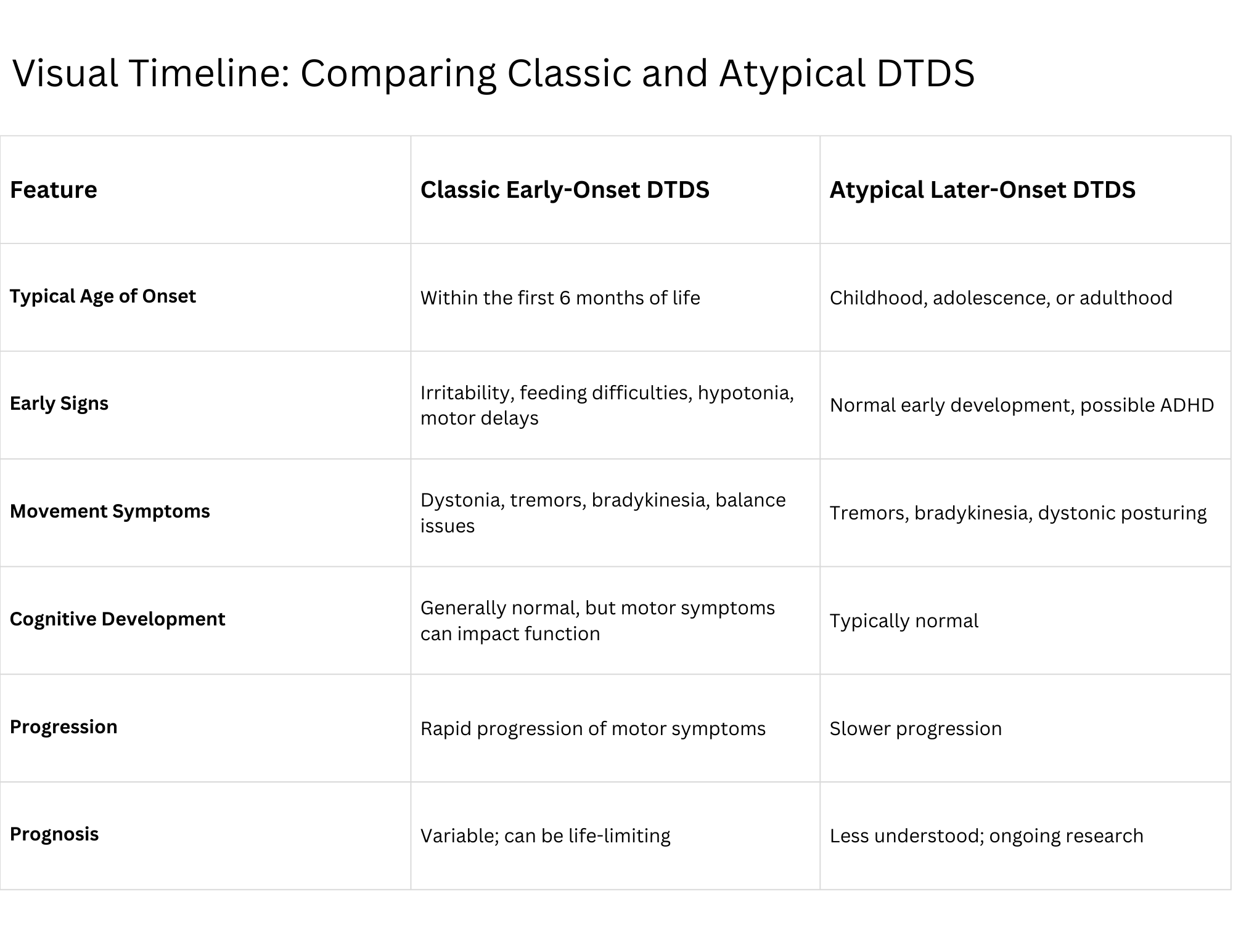Understanding the Two Forms of DTDS
DTDS can look different from person to person. While some children begin showing signs very early in life, others may not experience symptoms until later in childhood or even adulthood. Doctors generally describe two forms of DTDS based on when symptoms appear and how the condition progresses:
Classic DTDS: This form usually begins in early infancy. At first, symptoms may seem vague or hard to recognize — such as low muscle tone, feeding difficulties, or developmental delays. Over time, these symptoms progress to more noticeable movement challenges, including severe dystonia (involuntary muscle contractions) and parkinsonism (slowness, stiffness, and tremors). Classic DTDS often has a more intense impact on mobility and daily life.
Atypical DTDS: In some cases, symptoms don’t appear until childhood, the teenage years, or even adulthood. This form may progress more slowly and have a milder or different set of symptoms. Individuals with atypical DTDS might still experience movement issues, but they may retain more independence for a longer time and respond differently to treatments.
1. Classic Early-Onset DTDS
Typical Onset: Symptoms usually begin within the first six months of life. NCBI+1NCBI+1
Early Signs: Infants may show irritability, difficulty feeding, low muscle tone (hypotonia), and delays in reaching motor milestones like sitting or crawling.
Progression: As the condition progresses, children often develop movement challenges such as involuntary muscle contractions (dystonia), tremors, slow movements (bradykinesia), and difficulty with balance and posture.
Additional Symptoms: Some may experience eye movement disorders, including recurrent oculogyric crises (episodes of upward eye movement), difficulty initiating eye movements, and eyelid myoclonus (rapid blinking). NCBI+1NCBI+1
Cognitive Development: Many individuals with classic DTDS show normal cognitive development, though the severity of motor symptoms can impact daily functioning.
2. Atypical Later-Onset DTDS
Typical Onset: Symptoms may appear in childhood, adolescence, or adulthood, often after normal early development.
Early Signs: Some individuals may have attention-deficit/hyperactivity disorder (ADHD) in childhood.
Progression: Later-onset symptoms can include tremors, progressive bradykinesia, dystonic posturing, and variable muscle tone. NCBI+3PubMed Central+3NCBI+3
Cognitive Development: Cognitive development is often normal, and individuals may maintain a higher level of independence compared to those with classic DTDS. NCBI
Prognosis: The long-term outlook for individuals with atypical DTDS is still being studied, as this form is less common and less understood. NCBI
Note: The progression and severity of symptoms can vary widely among individuals, even within the same form of DTDS. Early diagnosis and tailored support are crucial in managing the condition.

